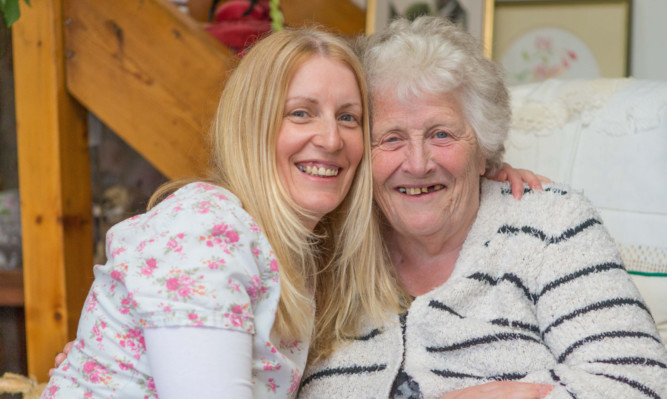A Fife woman who saved her mum using CPR has got behind a campaign to teach 500,000 people the technique.
Swimming pool lifeguard Emma Scott, 40, used chest compressions and a community defibrillator when Doreen, 76, went into cardiac arrest at her home in Crail earlier this year.
Doreen has since recovered and Emma has praised the Save a Life for Scotland scheme, which aims to save 1,000 more lives by 2020 by training 500,000 Scots in CPR (cardiopulmonary resuscitation).
Emma said: “I think the campaign is brilliant.
“It’s so important to get it out there that having more people who are willing and comfortable doing CPR and using defibrillators can only benefit people’s lives.
“You have literally minutes to save a life.
“It’s a simple few steps, using your hands, that can make the difference of somebody having a family member or not.
“Younger people can also suffer cardiac arrest and this gives people a second chance.”
Emma spoke about her experience in front of health professionals and first aiders at the recent Scottish Community Resuscitation Conference hosted by St Andrews University.
The Save a Life for Scotland website, savealife.scot, pulled together information so people could find CPR courses in their area more easily.
Dr Alistair Dewar from the Edinburgh Resuscitation Research Group, which is coordinating Save a Life for Scotland said: “We’ve pulled together existing training providers, making them much more accessible to the public.
“There are also survivor stories to give people an incentive to find training, by showing it works and can be done by normal members of the public.
“The other point of the campaign is trying to bust the myths around CPR.
“For example, a fairly large proportion of the community are afraid of doing more harm than good.
“But the only thing you can do is make the situation better.”
Dr Dewar clarified the difference between a heart attack, where there is a problem with the blood supply to the heart, and cardiac arrest, where the heart stops beating.
He added: “The basic level of training for people is to check two things – are they unresponsive and have they stopped breathing?
“If the answer is yes, then start chest compressions.”
